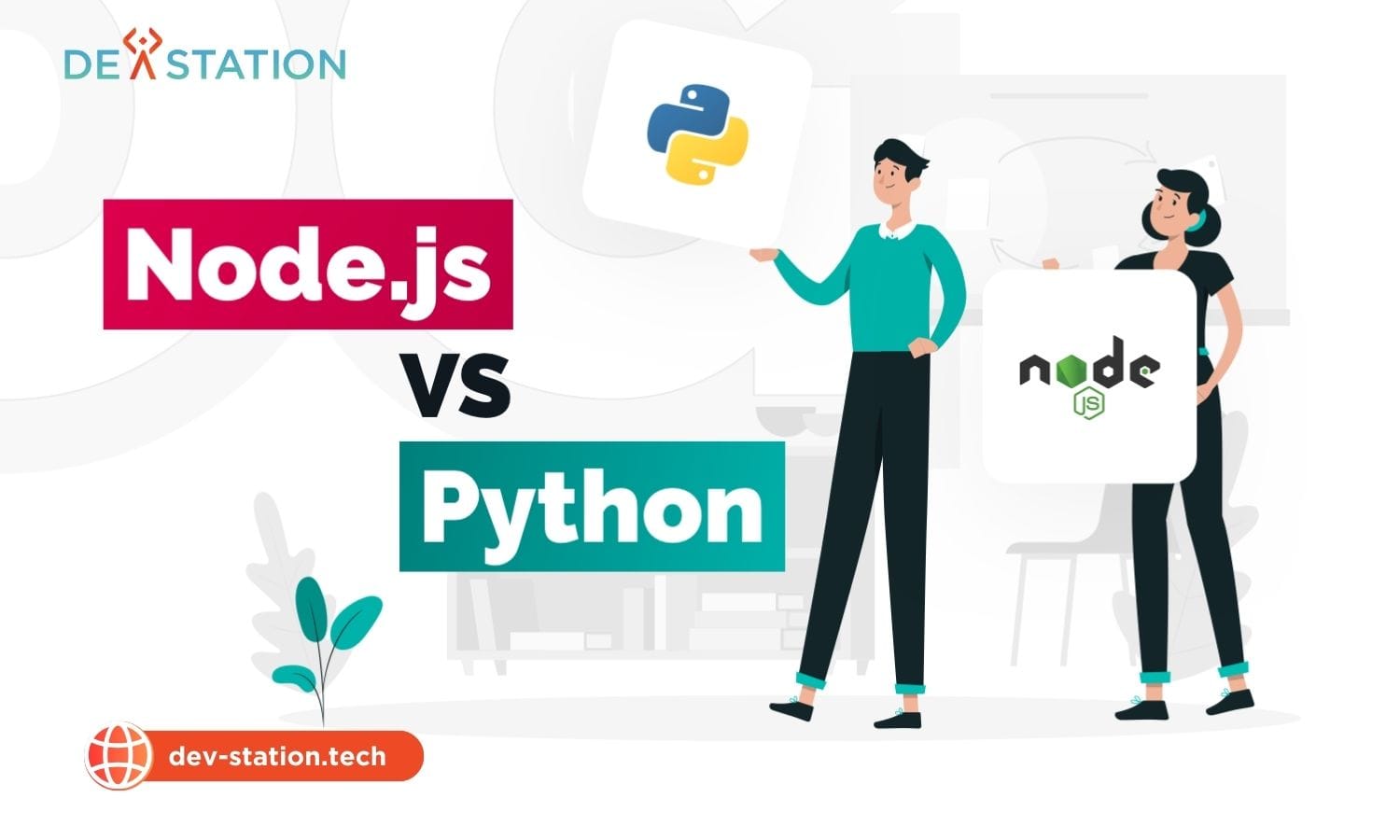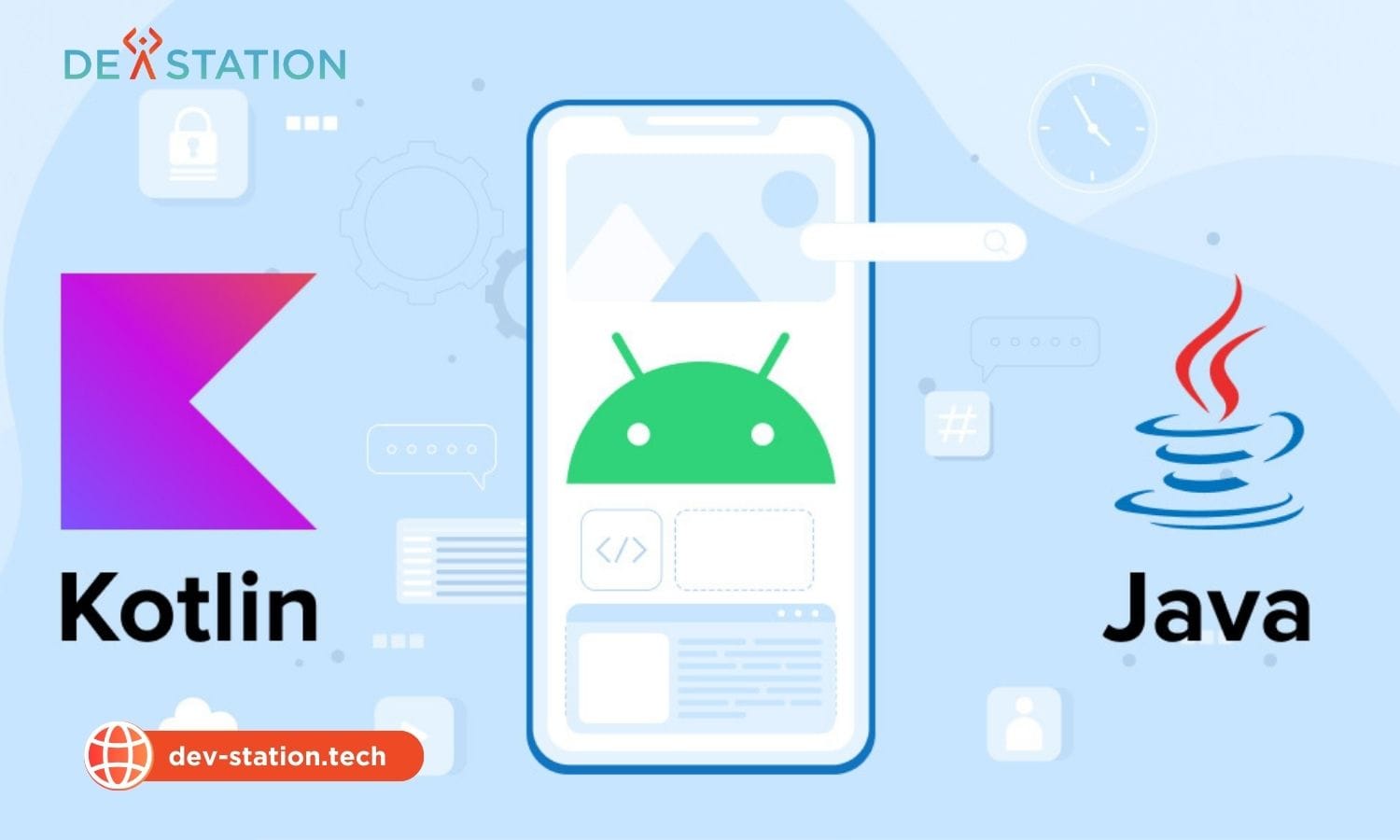The five core differences are their architecture (asynchronous vs. synchronous), performance in I/O-bound versus CPU-bound tasks, primary use cases (real-time apps vs. data science), developer ecosystem (npm vs. Pip), and scalability approach for handling concurrent operations.
Choosing the right backend technology is one of the most consequential decisions an architect or developer can make. It influences performance, scalability, development speed, and the ability to hire talent. Node.js and Python are two of the most popular programming languages and environments for server-side development, yet they operate on fundamentally different principles. Understanding these distinctions is crucial for aligning the technology with your project’s goals. Let’s explore the five key differentiators in detail.
Contents
Toggle1. How Do Their Architecture and Performance Models Differ?
Node.js uses a single-threaded, event-driven architecture with non-blocking I/O, making it exceptionally fast for I/O-bound tasks. Python uses a multi-threaded, synchronous model but is constrained by the Global Interpreter Lock (GIL), limiting true parallelism for CPU-bound tasks.
The most significant difference lies in their architectural approach to handling tasks.
Node.js: Single-Threaded and Event-Driven
Node.js operates on a single main thread using an event loop. When a request involving an Input/Output (I/O) operation arrives—like reading a file, querying a database, or calling an external API—Node.js does not wait for it to complete. Instead, it offloads the operation to the system’s kernel, registers a callback, and moves on to handle the next request. Once the I/O operation is finished, the event loop picks up the corresponding callback and executes it. This non-blocking I/O model allows Node.js to handle thousands of concurrent connections with minimal memory overhead, making it incredibly efficient for I/O-bound applications. This event-driven architecture is a core benefit, promoting scalability and responsiveness.
Python: Multi-Threaded and the Global Interpreter Lock (GIL)
CPython, the standard Python implementation, uses a mechanism called the Global Interpreter Lock (GIL). The GIL is a mutex that ensures only one thread executes Python bytecode at a time within a single process, even on multi-core processors. This simplifies memory management but presents a major bottleneck for CPU-bound tasks that could benefit from true parallel execution. For I/O-bound tasks, Python’s threading can still offer concurrency because the GIL is released while a thread is waiting for an I/O operation to complete. However, to achieve true parallelism for CPU-intensive work, Python developers must use the multiprocessing module, which bypasses the GIL by spawning separate processes, each with its own interpreter and memory space.
2. Which Technology Is Better for Specific Use Cases?
Node.js is the superior choice for real-time, I/O-heavy applications like chat apps, streaming platforms, and microservices APIs. Python is the undisputed leader for data science, machine learning, scientific computing, and complex data processing backends.
The architectural differences naturally lead each technology to excel in different domains.
- Choose Node.js for:
- Real-Time Applications: Its event-driven model is perfect for chat applications, online gaming, and collaborative tools where low latency is critical. Trello uses Node.js to handle many open connections for instant updates.
- API Microservices: Its lightweight and fast nature makes it ideal for building small, independent services. Companies like Netflix and PayPal leverage Node.js for their microservices architecture.
- Data Streaming: Efficiently handles streams of data, making it suitable for applications that process data in real-time.
- Single-Page Applications (SPAs): As it uses JavaScript, it’s a natural fit for the backend of SPAs built with frameworks like React, Angular, or Vue, allowing for code reuse and a unified language.
- Choose Python for:
- Data Science and Machine Learning: Python’s ecosystem of libraries like NumPy, Pandas, TensorFlow, and PyTorch is unmatched, making it the default choice for AI/ML workloads. Spotify and Netflix use Python extensively for their recommendation algorithms and data analysis pipelines.
- CPU-Intensive Tasks: For heavy computations, Python’s ability to offload work to C-based libraries or use multiprocessing gives it an edge over Node.js’s single-threaded model.
- Web Development: With powerful backend frameworks like Django and Flask, Python is excellent for building complex, database-driven web applications. Instagram’s backend was famously built with Django.
- Automation and Scripting: Its simple, readable syntax makes it a go-to language for writing automation scripts and system administration tools.
The comparison of Django vs Node.js often highlights this core difference: Django’s batteries-included approach for rapid development of complex sites versus Node.js’s flexibility for real-time services.
3. How Do Their Ecosystems and Libraries Compare?
Node.js has the npm registry, the largest software registry in the world, with a vast number of packages for web development. Python has Pip and the PyPI repository, which is smaller but incredibly deep and mature in data science, machine learning, and scientific domains.
The strength and focus of a technology’s ecosystem are critical factors in development efficiency.
| Aspect | Node.js | Python |
|---|---|---|
| Package Manager | npm (Node Package Manager) | pip (Pip Installs Packages) |
| Repository | npm Registry | PyPI (Python Package Index) |
| Ecosystem Size | Over 2 million packages, the largest registry. | Over 500,000 packages, but highly curated. |
| Key Libraries | Express, Koa, NestJS (web frameworks); Socket.IO (real-time); Mongoose (ODM) | Django, Flask (web frameworks); Pandas, NumPy (data); TensorFlow, PyTorch (ML) |
While npm’s size is impressive, it also means there can be more variance in package quality. PyPI, while smaller, is the gold standard for data science and AI, with mature, highly optimized libraries that are often the reason developers choose Python in the first place. The choice often comes down to the ecosystem’s strengths: web-centric and full-stack JavaScript for Node.js, and data-centric for Python. This choice is also reflected in other backend comparisons like Laravel vs Node.js or Ruby on Rails vs JavaScript, where the Node.js ecosystem is a key differentiator.
4. What About Syntax and Learning Curve?
Python is renowned for its simple, clean, and highly readable syntax, making it one of the easiest languages for beginners. Node.js uses JavaScript, which is ubiquitous but can be complex due to its asynchronous nature (callbacks, Promises, async/await).
Python: Readability Counts
Python was designed with a focus on developer productivity and code readability. Its syntax is clean, expressive, and often described as being close to plain English. This leads to a gentler learning curve for new programmers and faster development cycles for experienced ones. The explicit nature of Python code makes it easier to maintain and debug over the long term. This simplicity is a major factor when making choices like Python vs Java, where Python’s conciseness is a clear advantage.
Node.js: The JavaScript Advantage and Challenge
The primary advantage of Node.js is that it uses JavaScript. For companies with frontend teams skilled in JavaScript frameworks like React or Vue, using Node.js for the backend creates a unified, full-stack JavaScript development experience. However, mastering asynchronous programming in JavaScript can be challenging. Concepts like the event loop, callbacks, Promises, and async/await require a different way of thinking compared to traditional synchronous code, which can pose a hurdle for beginners. The debate between Python vs JavaScript often centers on this trade-off between Python’s simplicity and JavaScript’s full-stack ubiquity.
5. How Do They Approach Scalability and Concurrency?
Node.js scales horizontally with exceptional ease, making it perfect for microservices architectures that handle many concurrent I/O operations. Python scales by running multiple processes to bypass the GIL, which is effective for CPU-bound tasks but can be more complex to manage.
Node.js: Horizontal Scaling and Microservices
Node.js is built for concurrency, not parallelism. Its single-threaded, non-blocking model excels at handling a high volume of concurrent I/O operations. To scale across multiple CPU cores, the standard practice is to run multiple instances of a Node.js application and distribute traffic between them using a load balancer. This horizontal scaling model is a perfect match for microservices and serverless architectures, where applications are composed of small, independent, and stateless services.
Python: Multiprocessing for Parallelism
For Python to take full advantage of multi-core processors for CPU-bound work, developers typically use the `multiprocessing` module. This involves spawning multiple independent Python processes, each with its own memory space, effectively bypassing the GIL. While powerful, this approach can be more memory-intensive and complex to manage than Node.js’s simpler horizontal scaling model, especially regarding inter-process communication. In scenarios where you’re comparing it with other languages, like in a guide to AI programming languages, Python’s data science ecosystem often outweighs the complexities of its concurrency model.
How Do You Choose Between Node.js and Python for Your Project?
Make your choice based on project requirements, not just popularity. Analyze if your application is I/O-bound or CPU-bound, consider your team’s existing skills, evaluate the required libraries, and plan for your specific scalability needs.
Here is a clear, step-by-step process to guide your decision:
- Analyze Your Application’s Core Workload: Is your application primarily I/O-bound (e.g., a web server handling many API requests, a chat service) or CPU-bound (e.g., performing complex calculations, video transcoding, training a machine learning model)?
- I/O-Bound: Lean towards Node.js. Its non-blocking architecture is tailor-made for this. Benchmarks often show Node.js outperforming Python by 40-70% for I/O tasks.
- CPU-Bound: Lean towards Python. Its vast selection of highly optimized C-based libraries for scientific computing and ML makes it significantly faster for these specific tasks.
- Evaluate Your Team’s Expertise: Do you have a team of JavaScript developers? Using Node.js creates a seamless full-stack environment. If your team is strong in data science or comes from a more traditional backend background, Python’s readability and powerful frameworks might be a better fit.
- Examine the Ecosystem Requirements: List the key third-party services and libraries your project will need. If your project is centered around machine learning, data manipulation, or scientific computing, Python’s ecosystem is non-negotiable. If you need a backend for a React frontend and plan to build real-time features, the Node.js ecosystem is a perfect match.
- Consider Long-Term Scalability: How do you envision your application growing? If you foresee a microservices-based architecture with many small, independent services, Node.js is a natural fit. If you anticipate needing to run complex, parallel data processing jobs, ensure you are comfortable with Python’s multiprocessing model.
What Are Some Real-World Examples of Each Technology?
Many of the world’s largest tech companies use Node.js and Python for what they do best. Netflix, Uber, and PayPal rely on Node.js for its speed and scalability, while Instagram, Spotify, and Dropbox use Python for its data processing power and rapid development.
Seeing how major companies leverage these technologies provides powerful insight into their strengths.
- Companies Using Node.js:
- Netflix: Migrated parts of its backend to Node.js to improve performance and build a more modular, lightweight application for its massive streaming service.
- Uber: Built its core ride dispatch system on Node.js to handle a massive number of real-time connections and process data quickly.
- PayPal: Rebuilt its web application with Node.js, resulting in a 35% reduction in average response time and doubling the number of requests served per second.
- LinkedIn: Switched its mobile app backend from Ruby on Rails to Node.js, reducing server load and improving performance.
- Companies Using Python:
- Instagram: The platform was originally built on the Python framework Django and continues to be one of the largest deployments, handling a massive scale of data and users.
- Spotify: Uses Python extensively for its backend services and, more importantly, for data analysis and machine learning to power features like music recommendations and Discover Weekly.
- Dropbox: The original desktop client and much of its backend logic were written in Python, chosen for its simplicity and cross-platform capabilities.
- Google: Python is an official server-side language at Google and powers many components of its services, including parts of YouTube.
Where Can You Get Expert Guidance on Your Backend Choice?
For a deeper analysis tailored to your specific project, the experts at Dev Station Technology can provide the clarity and strategic direction you need. We specialize in designing and building high-performance backend systems that align with your business goals.
The decision between Node.js and Python is a critical one with long-term implications. While this guide provides a solid framework for your choice, every project has unique nuances and challenges. A consultation with experienced architects can illuminate the best path forward, ensuring your backend is not only functional but also scalable, maintainable, and cost-effective.
At Dev Station Technology, we believe in building solutions that last. We invite you to explore more of our insights and learn about our approach to modern software architecture.
To discuss your project in detail and receive a personalized recommendation, please contact us at sale@dev-station.tech or visit our website at dev-station.tech. Let’s build something remarkable together.





